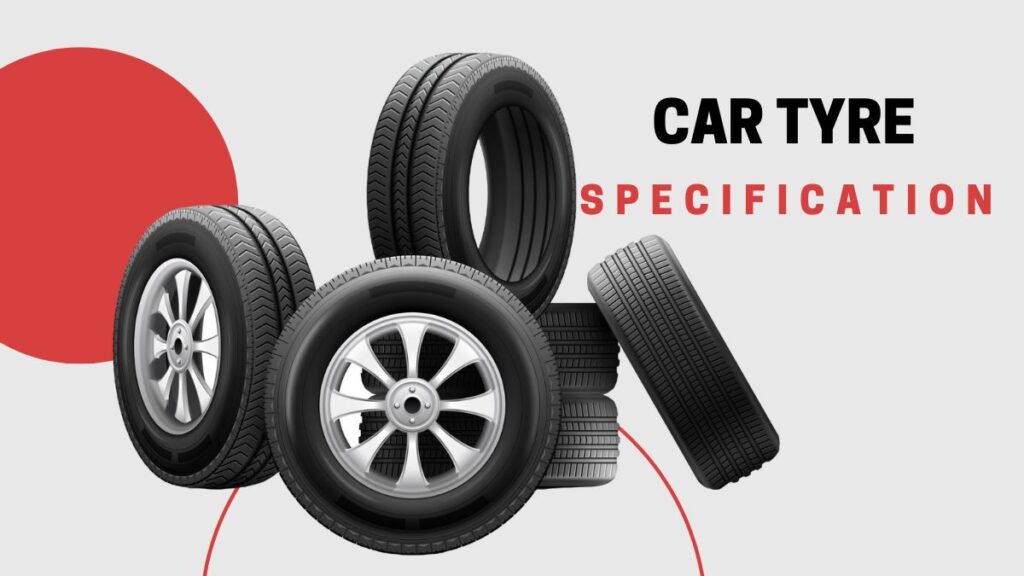Car Tyre Specifications Introduction
Car tires are more than just rubber that touches the road. They are engineered to precise specifications that affect everything from performance to safety. On the sidewall of a tire, you’ll find a series of numbers and letters.
These aren’t random—they tell you essential details about the tire’s size, construction, speed capacity, and load-carrying ability. Understanding these specifications helps ensure you choose the right tires for your vehicle, improving handling, fuel efficiency, and safety.
Table of Contents
Table of Contents
Breaking Down Car Tyre Specifications
Let’s take an example of a tire specification: 205/55 R16 91V. Each part of this code provides valuable information.
1. Tire Width (205)
The first number in the specification represents the tire’s width in millimeters. In this example, the tire is 205 mm wide from sidewall to sidewall. Wider tires generally offer better road grip, but they may affect fuel efficiency and ride comfort.
2. Aspect Ratio (55)
The second number refers to the aspect ratio, which is the tire’s height as a percentage of its width. Here, the aspect ratio is 55, meaning the tire’s height is 55% of its 205 mm width. A lower aspect ratio (e.g., 45) indicates a shorter sidewall, which typically results in better handling and steering response but may lead to a firmer ride. A higher aspect ratio offers a smoother ride and better shock absorption but can reduce handling precision.
3. Construction Type (R)
The next letter, in this case, R, stands for radial construction. Radial tires are the most common type used on modern vehicles. In radial construction, the tire’s internal plies (layers) are arranged radially across the tire, enhancing flexibility, road contact, and overall comfort. Other construction types, like bias-ply (denoted by a “B”), are less common and mostly used on specialty vehicles like trailers or agricultural equipment.
4. Wheel Diameter (16)
The next number indicates the diameter of the wheel (rim) that the tire is designed to fit, measured in inches. In this case, the tire fits a 16-inch wheel. It’s crucial to match the tire to the correct wheel size for your vehicle. Using a tire that doesn’t fit the wheel size can lead to poor performance and potential safety issues.
5. Load Index (91)
The load index is a number that indicates the maximum weight the tire can support when properly inflated. In this example, the load index is 91, which means each tire can carry up to 615 kilograms (about 1,356 pounds). It’s important to ensure that the tires you choose meet or exceed the load index recommended for your vehicle. Overloading your tires can lead to excessive wear or even tire failure.
6. Speed Rating (V)
The final letter represents the speed rating, which shows the maximum speed a tire can safely maintain over time. In this case, V means the tire can handle speeds up to 240 km/h (149 mph). Each letter corresponds to a different speed limit, from Q (160 km/h) to Y (300 km/h). Choosing tires with an appropriate speed rating ensures they perform well under the driving conditions you intend to encounter. Always refer to your vehicle manufacturer’s recommendations when selecting a tire with the correct speed rating.
Other Useful Information
Beyond the main specification, there are other markings on tires that offer valuable insights:
DOT Code:
The DOT (Department of Transportation) code is a long series of letters and numbers that can tell you where and when the tire was manufactured. This is important when checking the age of your tires since most experts recommend replacing tires after 6-10 years, even if the tread is still intact.
Treadwear, Traction, and Temperature Grades:
Tires also have UTQG ratings (Uniform Tire Quality Grading) stamped on the sidewall, which give you an idea of the tire’s treadwear durability, traction capability, and temperature resistance. These grades help compare the relative performance of tires, although actual performance can vary based on road conditions, driving style, and maintenance.
Tire Pressure Information:
While not directly found in the specification code, knowing the recommended tire pressure (in PSI) is essential for keeping your tires performing at their best. Under-inflation can cause tires to wear out more quickly, while over-inflation can reduce the tire’s grip on the road.
Conclusion
Understanding car tire specifications is essential for ensuring optimal performance, safety, and comfort on the road. The numbers and letters on the sidewall of a tire—width, aspect ratio, construction type, wheel diameter, load index, and speed rating—are more than just technical data. They provide crucial information about the tire’s size, durability, and performance characteristics, allowing drivers to make informed decisions when choosing the right tires for their vehicles.
By paying attention to these details, you can enhance your car’s handling, fuel efficiency, and safety, ensuring that your tires are suited to your driving needs and conditions. Always consult your vehicle’s owner manual and seek professional advice if needed to guarantee the best tire choice.
